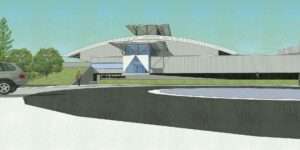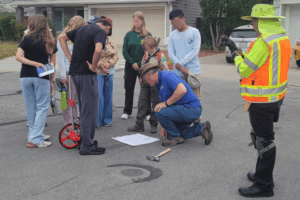In any building or site development project, success isn’t just about a beautiful design; it’s about a design that works—safely, reliably, and efficiently—within the constraints of the real world. This is where civil engineering provides the crucial foundation. Like the detailed data collected during an accurate land survey, the civil engineering phase translates the architectural vision into a practical, constructible plan, ensuring compliance and long-term functionality.
Moving from Concept to Reality
Civil engineering is the bridge between conceptual design and physical construction. While architects determine the look and layout of structures, civil engineers manage how that structure interacts with its surroundings—the earth, water, and infrastructure systems.
Key elements that civil engineers address include:
- Site Grading and Earthwork: Creating the stable, level platform necessary for construction while managing runoff and ensuring proper drainage.
- Utility Design: Planning the complex networks of water, sewer, gas, and power to service the site, ensuring they are accessible and meet regulatory standards.
- Stormwater Management: Designing systems (like retention ponds or permeable pavements) to safely and legally manage rainwater runoff, a critical factor for both the site and the surrounding environment.
- Roads and Access: Planning the transportation infrastructure, including driveways, parking lots, and public road connections, for efficient flow and safety.
Mitigating Risk with Precision and Planning
Just as a small error in survey alignment can cause major construction delays, a flaw in the civil engineering plan can lead to costly foundation issues, flooding, or utility failures. This phase is where many of the project’s most significant risks are identified and mitigated.
Why is early involvement key?
- Environmental Compliance: Engineers navigate complex permits related to wetlands, floodplains, and environmental protection, integrating compliance into the design rather than trying to fix it later.
- Cost Control: A thoughtful grading and earthwork plan minimizes the need to import or export expensive soil, saving on materials and transportation costs.
- Infrastructure Coordination: By designing utility connections and coordinating with local service providers early, engineers prevent last-minute clashes or delays in securing necessary hook-ups.
The Power of Integrated Expertise
The most successful projects are those where civil engineering is integrated with surveying, architectural, and structural planning from day one. At Underwood & Rosenblum, our combined expertise in both surveying and civil engineering means we don’t just use the data—we understand how it was collected, what its limitations are, and how to apply it most effectively.
This unified approach ensures that:
- Survey Data is Optimized: The design directly aligns with the site’s true conditions and reference systems.
- Solutions are Practical: Designs are inherently buildable because they’ve been vetted against real-world constraints (like rock or steep slopes).
- Future Issues are Anticipated: Potential maintenance and long-term costs related to drainage and infrastructure are minimized.
Building for the Future
The civil engineering plan is the backbone of your project’s longevity. By focusing on smart design, environmental stewardship, and regulatory precision, civil engineers ensure that your investment is sound, sustainable, and ready to stand the test of time. A strong foundation begins with an experienced civil engineering partner who understands the ground up.
Q&A: Partnering with Underwood & Rosenblum on Civil Engineering Projects
To provide context regarding Underwood & Rosenblum’s role in the civil engineering and site development process, here are some frequently asked questions related to the topics above:
Q: Where does Underwood & Rosenblum primarily offer its civil engineering and surveying services?
A: U&R is recognized as a leader in providing civil engineering and land surveying solutions, primarily serving clients in Northern California, including the Silicon Valley area.
Q: What is the primary benefit of U&R combining civil engineering and land surveying services?
A: The main benefit is a seamless, integrated approach. By housing both disciplines, U&R ensures that the precision data collected by surveyors is immediately and correctly interpreted by the civil engineering team. This eliminates friction between trades, improves accuracy in grading and utility planning, and avoids the costly mistakes that often occur when two separate firms are involved.
Q: What types of projects does U&R handle?
A: U&R’s experience spans thousands of projects across various market sectors, including Commercial, Education (e.g., school districts), Community developments, and Estate Home projects. They serve as primary consultants for land developers, architects, and builders.
Q: What is U&R’s history and technological approach?
A: Founded in 1978, U&R has over 40 years of experience. They combine an “old-fashioned honesty, hard work and responsibility” culture with the use of state-of-the-art technology, having been one of the first area firms to embrace Computer Aided Design and Drafting (CADD), and continuing to use the latest surveying, computer, and software technology.




